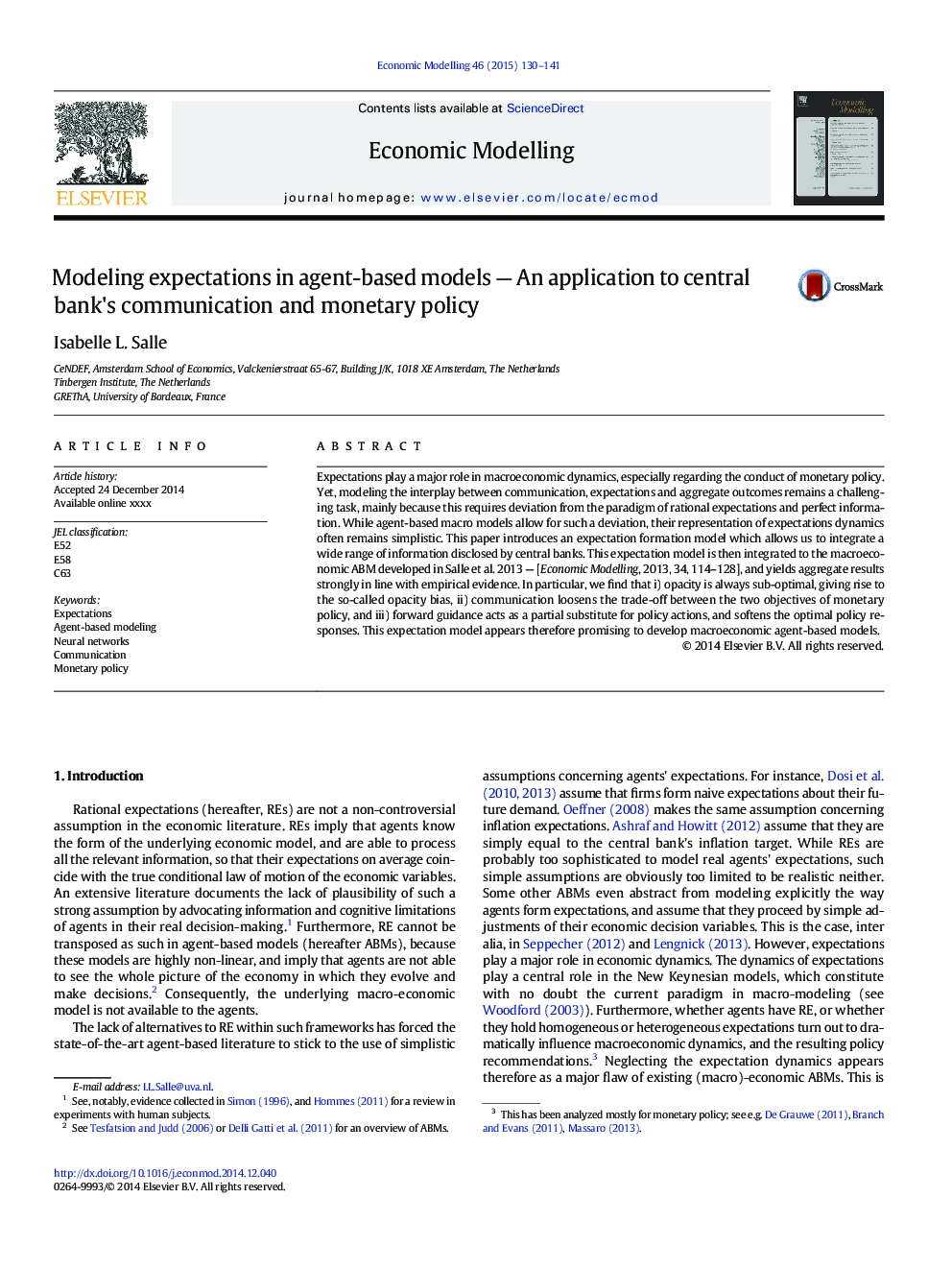| Article ID | Journal | Published Year | Pages | File Type |
|---|---|---|---|---|
| 5053776 | Economic Modelling | 2015 | 12 Pages |
Abstract
Expectations play a major role in macroeconomic dynamics, especially regarding the conduct of monetary policy. Yet, modeling the interplay between communication, expectations and aggregate outcomes remains a challenging task, mainly because this requires deviation from the paradigm of rational expectations and perfect information. While agent-based macro models allow for such a deviation, their representation of expectations dynamics often remains simplistic. This paper introduces an expectation formation model which allows us to integrate a wide range of information disclosed by central banks. This expectation model is then integrated to the macroeconomic ABM developed in Salle et al. 2013 - [Economic Modelling, 2013, 34, 114-128], and yields aggregate results strongly in line with empirical evidence. In particular, we find that i) opacity is always sub-optimal, giving rise to the so-called opacity bias, ii) communication loosens the trade-off between the two objectives of monetary policy, and iii) forward guidance acts as a partial substitute for policy actions, and softens the optimal policy responses. This expectation model appears therefore promising to develop macroeconomic agent-based models.
Related Topics
Social Sciences and Humanities
Economics, Econometrics and Finance
Economics and Econometrics
Authors
Isabelle L. Salle,
